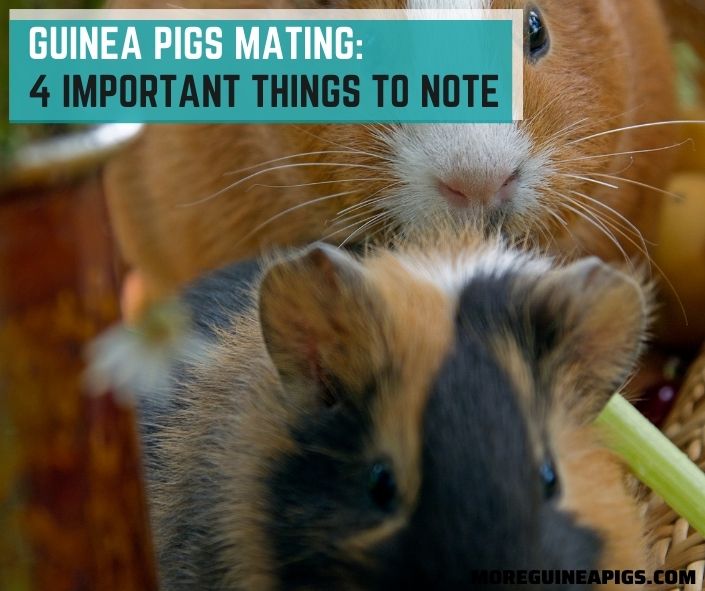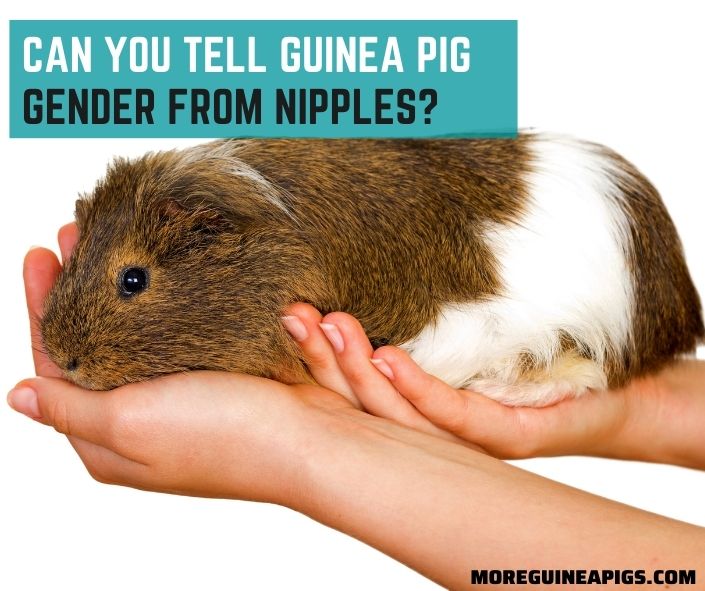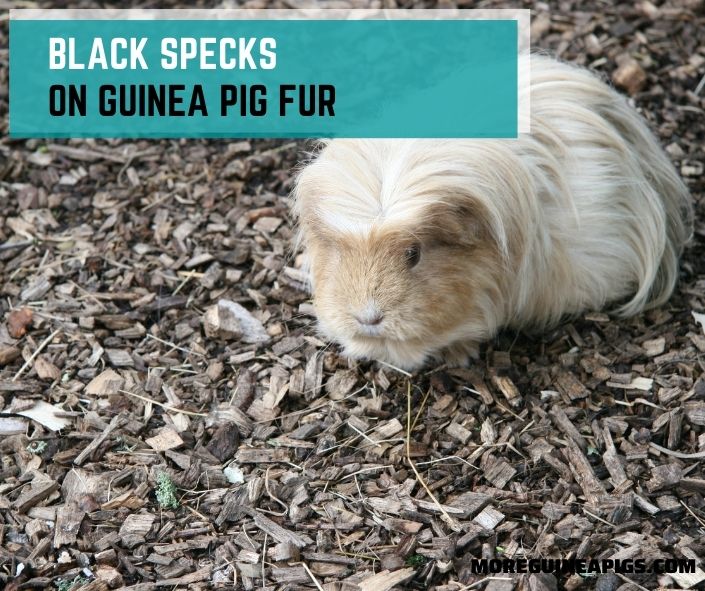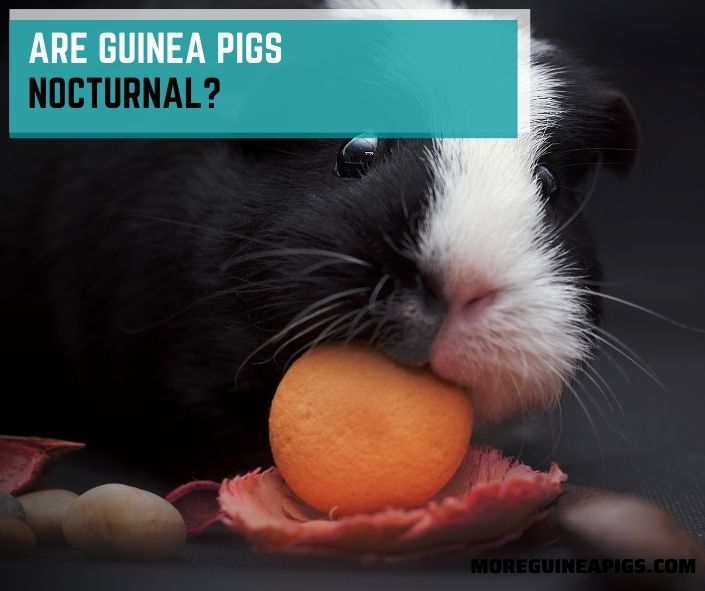Guinea Pigs Mating: 4 Important Things to Note
As a guinea pig owner, you may be interested in mating your guinea pig if you have a male and female guinea pig.
The fascinating thing is that guinea pigs have mating rituals to help owners determine when there are changes in their pets’ behavior and are ready to breed.
Guinea pigs are prolific breeders, and they readily breed if kept under a certain condition. Although breeding guinea pigs is quite easy, there are some things that you need to know for the survival of your sow and piglets.
We have helped highlight some important things to note when mating a guinea pig, from the mating process to caring for the piglets. So let’s dive in.
Guinea Pigs Mating: 4 Important Things to Note Down
Male guinea pigs usually become sexually mature and ready to mate once they are 2-3 months old. On the other hand, female guinea pigs will be sexually mature around two months old.
Guinea pigs can mate and breed any time of the year, but it is common to find them breeding in the spring.
Generally, it is recommended that individual pet owners not try to breed their guinea pigs. This is because it is hard to find new homes for young guinea pigs, and breeding also reduces female guinea pigs’ lifespan.
Furthermore, around 20% of guinea pigs die when owners try to breed them.
How Do I Know If My Guinea Pigs Want To Mate?
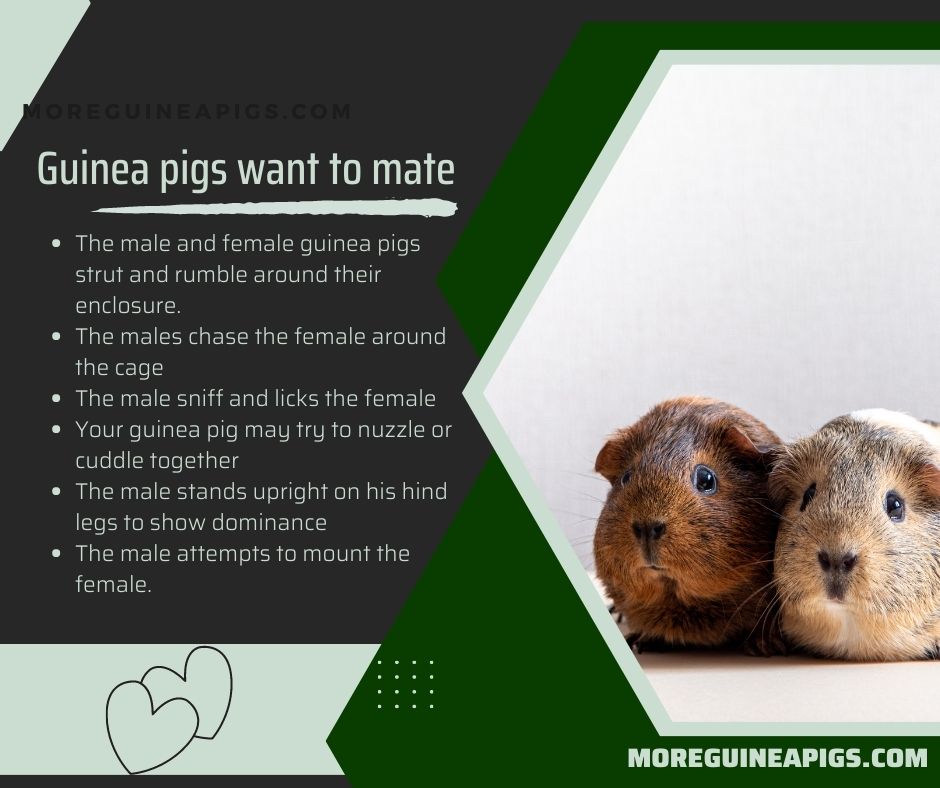
Guinea pigs are vocal creatures, and they give out several signs when they are ready to mate. Some of the signs that guinea pigs can give when they want to mate are:
- The male and female guinea pigs strut and rumble around their enclosure.
- The males chase the female around the cage
- The male sniff and licks the female
- Your guinea pig may try to nuzzle or cuddle together
- The male stands upright on his hind legs to show dominance
- The male attempts to mount the female.
Prenatal
A female guinea pig’s estrous or fertile periods can occur any time of the year. The length of the estrous cycle usually lasts for 16 days. The female is fertile for around 6-11 hours during this period, especially during the night hours.
Some of the signs that a female guinea pig is on heat are stated below.
Increased Activity
A female guinea pig in heat usually becomes more active searching for a mate. The sow can also chase other female guinea pigs in her enclosure when in heat. However, this behavior will stop once she has a mate with a male.
Swollen Vulva
When in heat, most female guinea pigs usually have a swollen vulva. It is common for many owners to mistake a female guinea pig for a male when this happens.
Chasing and Mounting Companions
As stated before, a sow in heat may chase and mount other females if housed with other female guinea pigs. This usually occurs because of the increase in their hormones, and you don’t need to worry when this happens.
Low-Pitched Squeaking
A sow in heat can also make low-pitched squeaking to help attract a mate. This low-pitched squeaking usually sounds like it is talking to herself and is different from rumbling.
Arched Back and Pushed Out Tushy
A great way to determine that your guinea pig is in heat is if it arches her back and pushes her bum up. They usually push out their booties and shake and strut to help attract a male.
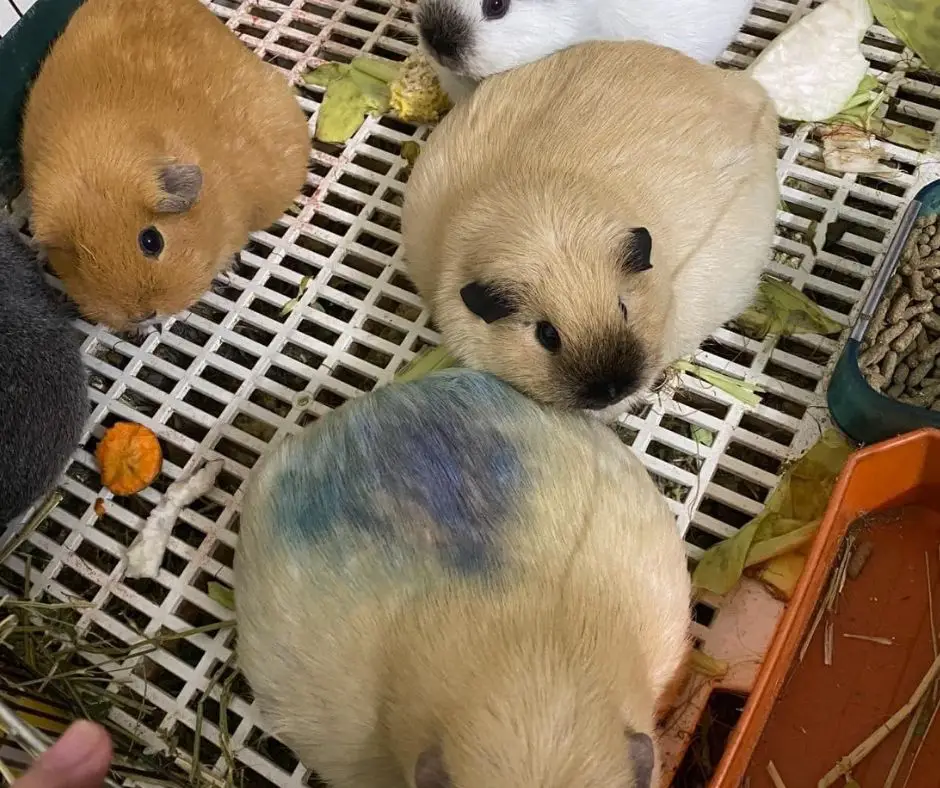
Postpartum
After mating, the gestation period of a guinea pig is between 59-72 days. It can be pretty hard to determine your guinea pig’s delivery time as sows don’t build nests.
However, you will notice that part of a sow pelvis will widen slowly right in front of the external genitalia a week before delivery.
It will then be around an inch wide an hour before delivery. The best thing is that guinea pigs can handle their own labor without assisting them.
About to Give Birth
Female guinea pigs will become pregnant after successfully mating with a male guinea pig. Once pregnant, the behavior and body shape of a sow will begin to change.
Some of the ways to determine that a guinea pig is pregnant are stated below.
- The female guinea pig will have a bigger appetite as she needs more food to nourish the baby guinea pigs inside her.
- The sow will start to gain weight. A great way to monitor a guinea pig’s weight is by using a small kitchen scale to weigh your guinea pig. This will help to get the slightest weight gain in your guinea pig.
- You can determine whether your guinea pig is pregnant by checking its size. A pregnant guinea pig’s side usually curves outwards, and it will continue to stretch as the baby develops. If you are not sure of any changes, you can compare a pregnant female with a non-pregnant female, and you will notice the difference.
- A pregnant guinea pig usually walks or runs awkwardly because of its new weight. You will also notice that they avoid popcorning or jumping when pregnant.
- A pregnant guinea pig is not usually as playful or social. This is because they feel tired and will focus their energy on nourishing their babies instead of playing.
- You can also use your fingers to gently examine a sow’s sides and stomach if it allows you to touch her. You will feel lumps or some movement if she is pregnant.
Once you notice these signs, you can confirm your suspicion by taking your guinea pig to a vet. The vet will help do a quick examination and also use a stethoscope to listen to your guinea pig’s abdomen.
He/she can then help confirm that your sow is pregnant.
The males will gather around the pregnant female and try to become a dominant male to protect the female and also mate with her.
This is because female guinea pigs have a short postpartum and all of the males will try to mate with a new mother if there is no dominant male.
Guinea Pig Mating Season Care

Generally, guinea pigs will reach sexual maturity once they are about 3-4 months. Guinea pigs will likely mate and breed if you just house a male and female together. This helps to show that breeding guinea pigs is quite easy.
However, you must know everything your guinea pig will need to make the process successful. Some of the ways to care for your guinea pig are stated below.
Prenatal
Guinea pigs usually become sexually mature as young as a month old. However, a female guinea pig should be about 3-4 months old before you try to breed them. Another thing is that female guinea pigs should not be too old before breeding them.
Breeding them at a young or old age can affect their chance of giving birth naturally, and you may need a Cesarean section to get the baby out.
Generally, it is risky to breed a female guinea pig after 5 or 6 months old because their pubic symphysis fuses around ten months old or less.
About to Give Birth
The pregnancy stage is quite a stressful time for most guinea pigs. Here are some of the ways that you can care for a pregnant guinea pig.
- Try to place a pregnant guinea pig cage in a quiet area far from the most active part of your home. This will help to reduce their stress levels during the period.
- You can house your pregnant guinea pig separately if it looks irritated when a male or other female is in their cage. When doing this, it is advisable to remove other guinea pigs and leave the sow in the cage to help avoid stress.
- You should also try to remove other guinea pigs from a sow cage if they seem to be pushing the female or bothering her.
- A sow will need a constant supply of hay, leafy vegetables, high-quality pellets, fruits rich in vitamin C, and you may add lucerne hay to provide extra protein boost in their diet. This is because they need a lot of nutrients for the growth of the offspring they are carrying.
- Pregnant guinea pigs also require lots of water. It is important that you refill their water bottle daily with fresh water because they drink more during pregnancy.
- Avoid picking up a pregnant guinea pig unless it is necessary. This is because a pregnant guinea pig can feel vulnerable when being held because of its growing body. However, you can still pet and talk to your guinea pig during pregnancy.
Also read: Care of a Pregnant Guinea Pig
Postpartum
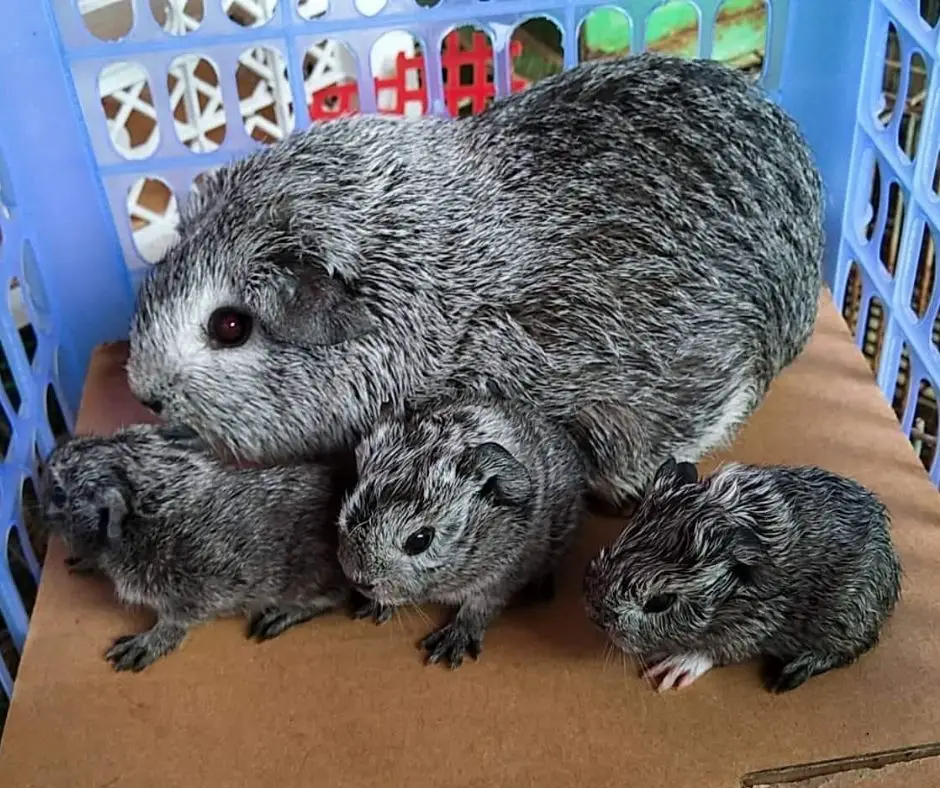
Generally, a guinea pig will labor on its own without any assistance. After giving birth, the mother will clean them off, eat their umbilical cords, and clean up the area.
In the wild, guinea pigs do this to help leave no trace of birth that can aid a predator to track them.
However, if your guinea pig is exhausted after birth, you can help to remove the birth sac from the pup’s head and clean their body with a soft towel.
If necessary, you can also help cut the umbilical cord with sterilized scissors and rub the pup gently to ensure it is breathing before placing it close to the mother.
You can then help to remove the contaminated bedding from their cage and allow the mother to focus on caring for the pup.
Another thing is that you should try to separate the dad from the mom and babies immediately after birth, and this is because the sow can be impregnated after birth by the male.
After delivery, female guinea pigs are usually exhausted and need food. You can try to provide extra vegetables and treats to help them regain their energy and may even use it to introduce their pups to solid food.
You can then provide alfalfa hay to provide extra calcium for the mother and kids.
Note: Mother guinea pigs will care for their pups naturally, and it may take some guinea pigs time to do this.
Once you see that all the pups are breathing and active, it is best to avoid interfering with the process. This is because forcing your guinea pig to interact with their pups can cause problems.
Also read: How To Clean a Guinea Pig Cage?
Risks of Guinea Pigs Breeding
It is important that you breed female guinea pigs before they are seven months old as they can encounter serious problems during delivery if they are older.
This is because their pelvis fails to widen if they are bred for the first time after seven months and may need a cesarean section to help deliver the young ones.
Doing a cesarean section for your guinea pig is usually expensive and carries risks. Furthermore, cesarean sections are rarely successful in guinea pigs due to their small size.
A female guinea pig can also experience pregnancy toxemia. This is a serious condition, and it occurs when your guinea pig is overweight in their first or second pregnancy.
Some of the other things that cause this condition are stress, old age, lack of exercise, etc.
You may notice the sign of this condition over 1-5 days during the first week of giving birth or the last two weeks of pregnancy.
Some of the signs are depression, poor appetite, difficulty breathing, reluctance to move, coma, incoordination, and death. However, some sows suffering from this condition may not show any signs and will die suddenly.
Another risk of breeding female guinea pigs is that it can reduce their lifespan, and this is because the breeding process from mating to delivery can be stressful and affect their lifespan in the long run.
How Do Guinea Pigs Mate
Guinea pigs are vocal creatures, and they usually communicate with each other whenever they want to mate. You will notice that both males and females make mating calls at different stages during mating.
A male guinea pig interested in mating with a female usually starts to rumble while pacing the cage and wiggling his hip to attract the mate. A female in heat will also rumble to gain the attention of a male as well.
Here are some of the mating rituals that guinea pigs can make during mating:
Male Chasing Female Guinea Pigs Around the Cage
A common sign that a male guinea pig is trying to mate a female is by regularly chasing the female around their cage. Once the male catches the female, he may also try to mount her.
Males Sniff And Lick Females
Another mating ritual for males seeking a mate is to move to a female and start to lick her or sniff her rump.
Generally, guinea pigs of all sexes can do this to get more information about their cage mates or detect pheromones. However, once a male does this to a female, then it is trying to mate and wants to determine whether the female is in heat.
Nuzzling
You may find guinea pigs nuzzlings if they like each other and are trying to bond. Nuzzling or cuddling helps a male to get closer access to the female and detect more smells.
During mating, cuddling usually occurs before mounting, or it can be followed by your guinea pig suddenly standing upright.
Males Standing Upright
A male guinea pig stands upright on his hind legs to show dominance while surveying his surroundings once they find a suitable and willing female for mating.
Once you notice this and your guinea pig has gone through the previous mating ritual, then you should know your guinea pig is about to mate.

Males Mount Females
The male will then mount the female after nuzzling or displaying dominance. Once they start mating, you will hear the female guinea pig squeal loudly.
However, mating in guinea pigs usually lasts for a few seconds, and the sound will die down after mating.
How Long Does It Take for Guinea Pigs to Mate
As stated before, guinea pigs are usually in the heat period throughout the year but are more common in the spring. Their heat period lasts for 16 days, and they are fertile for 6-11 hours, usually at night.
Once the female is on heat, she will arch her back for a male to mate her. The actual mating of guinea pigs will last for a few seconds, and the female will squeal loudly during the whole process.
Can Guinea Pigs Get Pregnant Without a Male
No, a female guinea pig cannot get pregnant without a male mounting it. This is why it is recommended not to house a male and female guinea pig together if you are not planning to mate them unless castrated.
How Many Times Can a Guinea Pig Get Pregnant
Guinea pigs usually have their fertile periods at any time of the year, which means they can get pregnant several times per year.
The gestation period of a guinea pig is around 59-72 days (around two months). Female guinea pigs usually start a new estrous cycle shortly after giving birth.
This means guinea pigs can get pregnant 5-6 times in a year. However, breeding takes its toll on female guinea pigs and can reduce their lifespan. This is why it is best not to breed your guinea pigs 5-6 times a year.
How Many Babies Do Guinea Pigs Have at Once
Generally, guinea pigs can give birth to 2-4 babies per litter but can also be eight per litter. However, when a guinea pig gives birth to 8 or more babies, some may not survive.
This is because the pups will have to compete for milk, and not all of them will receive enough nourishment from their mom.
Care Of Newborns Guinea Pigs
Newborn guinea pigs usually weigh about 100g, and they have hair and can see and run after birth. Their mother will nurse them after birth until they are three weeks old.
However, owners can also help provide adequate care to help ensure they grow and live healthily.
You should first ensure that you house the baby with their mother in a spacious cage and place it in a quiet area. You will also need to weigh the pups regularly to check if they are gaining steady weight.
Another thing is to ensure you provide enough food for the mother and the pup for their nourishment. After birth, you can offer shredded lettuce to the mother and remove the leftovers afterward.
On the third day after birth, you can then offer fresh hay, pellets, and green vegetables to the pup.
A constant supply of fresh water should also be provided to the pups.
Read more about baby guinea pig care
Small Animals Milk Bottles for Nursing with Replacement Nipples, Pet Feeder Set
Some Thought
Generally, guinea pigs are prolific breeds, but it is recommended that individual pet owners should not breed them.
This is because rehoming them to caring and responsible pet owners is difficult, and breeding also reduces your guinea pigs’ lifespan.
However, the process of breeding guinea pigs can be fascinating and rewarding if you decide to breed them.
